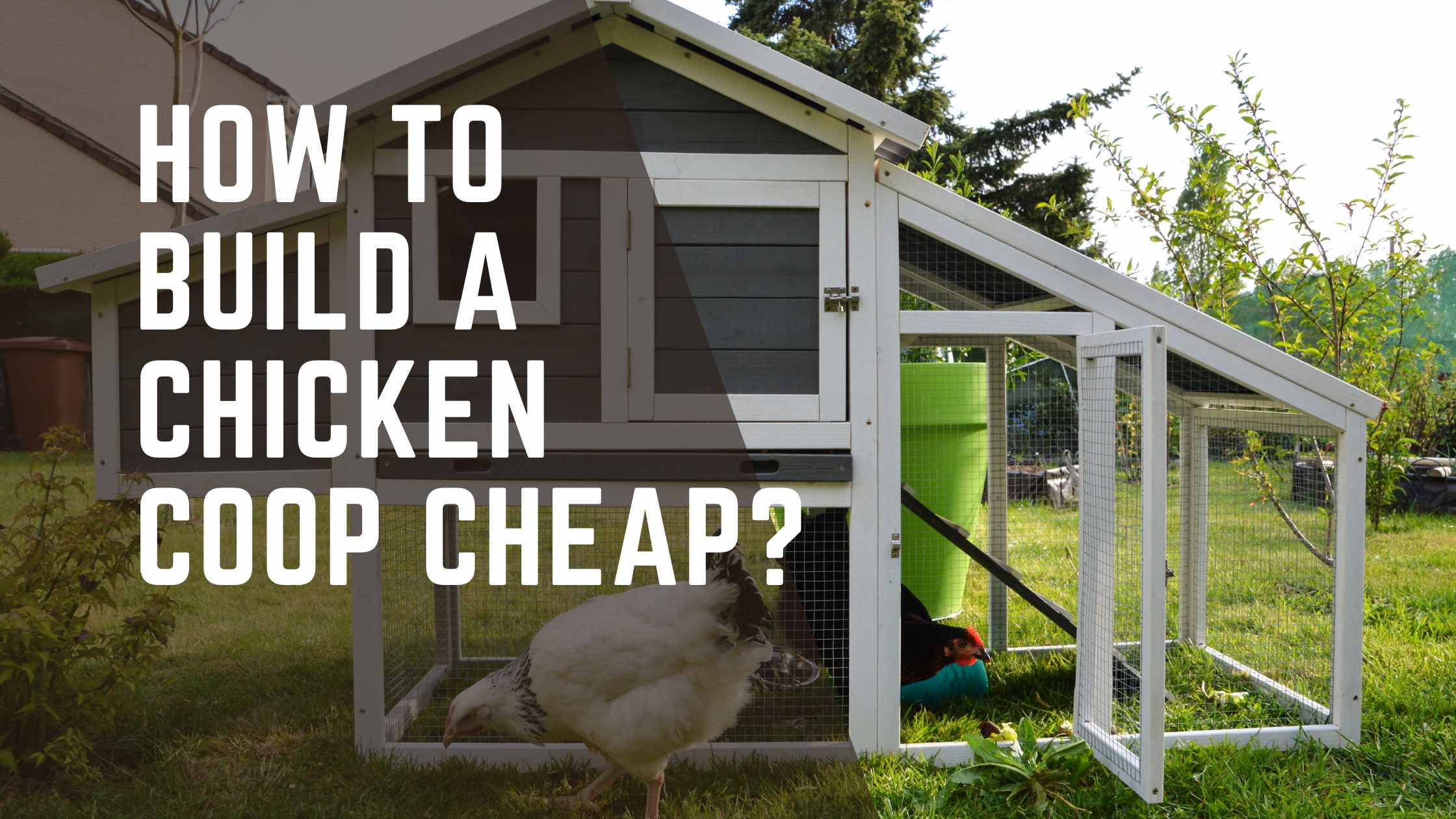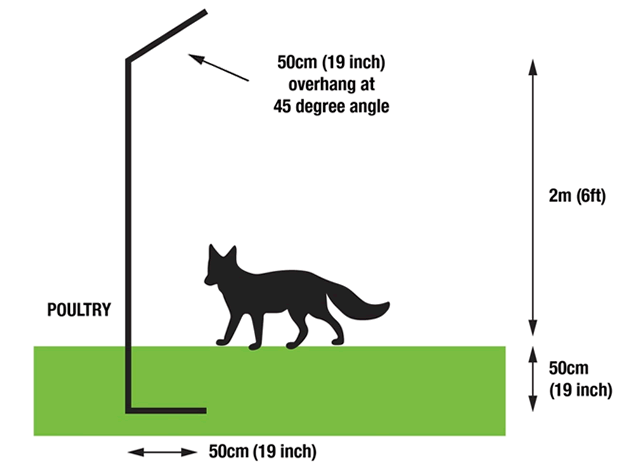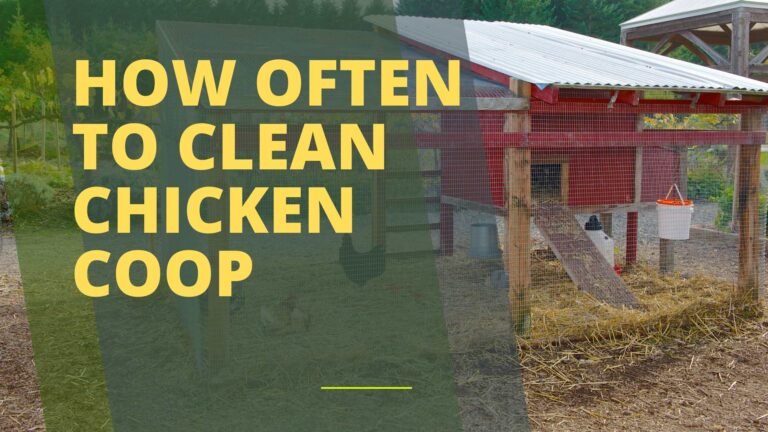To build a chicken coop cheaply, start with reclaimed materials and a simple design. Plan your coop size based on the number of chickens to house economically.
Starting a backyard flock requires safe, comfortable housing for your chickens without breaking the bank. A frugal coop can be built using salvaged wood, old pallets, or scrap materials that often come free or at minimal cost. Creating your own chicken coop also fosters customization, ensuring that it fits your specific needs and the available space in your garden or yard.
How to Build a Chicken Coop Cheap? By doing the construction yourself, you avoid the expense of pre-fabricated coops and gain the satisfaction of a DIY project. Prioritize a functional layout that offers protection from predators and the elements, ventilation, and easy access for cleaning and egg collection. With creativity and some basic carpentry skills, you can construct a durable chicken coop that is cost-effective and serves as a cozy retreat for your feathered friends.

Credit: www.motherearthnews.com
Why Raise Chickens?
Many people today are turning their backyards into a haven for chickens. This resurgence comes with good reason. Not only do chickens require relatively low maintenance, but they also bring a host of benefits to your home and garden. From providing fresh eggs to contributing to sustainability efforts, let’s explore why raising chickens is a clucking great idea!
Benefits Of Fresh Eggs
Having chickens means a steady supply of fresh eggs. Unlike those bought from the store, home-laid eggs are known for being more nutritious and flavorful. They’re a source of high-quality protein and rich in vitamins and minerals. Having control over your hens’ diet ensures you’re eating eggs free of chemicals and antibiotics. Furthermore, there is a clear difference in the vivid yolk color and the thick, sturdy shell of a fresh egg, signifying its superior quality. Below is a chart laying out the nutritional benefits:
| Nutrient | Benefit |
|---|---|
| Vitamin A | Better vision, skin health |
| Vitamin E | Antioxidant, cell protection |
| Omega-3s | Heart health, brain function |
| Protein | Muscle repair, immune defense |
Natural Pest Control
Chickens are nature’s pest control agents. They spend much of their day pecking away at insects which can benefit your garden by reducing the need for chemicals. Chickens eat most garden pests that can destroy crops, such as:
- Aphids
- Grubs
- Beetles
- Slugs
With chickens on pest patrol, your plants stay healthy and robust. A dynamic ecosystem develops in your garden, aiding in biodiversity. Plus, your feathered friends will be very happy with the menu!
In addition to these direct benefits, chickens can improve your garden’s soil quality. Their droppings are high in nitrogen, an essential component for composting. This creates a self-sustaining cycle where your chickens feed on pests and provide nutrients for your crops. The overall effect is a healthier, more vibrant garden ecosystem.
Preparation Is Key
Embarking on a DIY chicken coop project sets the stage for fresh eggs and happy hens. Thorough preparation stands as the foundational step to a successful, cost-efficient coop. Get ready to approach this exciting venture with confidence by laying the groundwork.
Choosing The Right Location
Finding the perfect spot for your chicken coop involves several considerations. Aim for a high, dry area to avoid flooding. Ensure the location provides ample sunlight and shade for climate balance. Consider ease of access for both caretaking convenience and egg collection. Keep predators in mind; a visible area helps deter unwanted visitors. Below is a checklist for site selection:
- Dry, elevated land to prevent waterlogging
- Balance between sunlight and shade
- Easy access for maintenance and egg retrieval
- Clear visibility to monitor for predators
- Distance from neighbors to minimize noise concerns
Determining The Size Of Your Coop
Space requirements directly affect your flock’s health and happiness. The general rule stands at 3-4 square feet per chicken inside the coop, and about 8-10 square feet per chicken in an outside run. Plan for growth to avoid future space shortages. To make the size determination clearer, here’s a table based on flock size:
| Number of Chickens | Inside Coop Space (sq ft) | Outside Run Space (sq ft) |
|---|---|---|
| 5 | 15-20 | 40-50 |
| 10 | 30-40 | 80-100 |
| 15 | 45-60 | 120-150 |
Adjust the size based on your specific chicken breed and personal requirements. Prioritize a functional, secure, and comfortable environment over aesthetics to stay on budget.
Designing Your Coop On A Budget
Want to build a chicken coop without spending a lot? It’s all about getting creative and resourceful. A cozy, functional home for your feathered friends doesn’t need to cost a fortune. Here’s how you can design a budget-friendly chicken coop that checks all the boxes for safety, comfort, and style.
Using Recycled Materials
Recycling materials is a win-win. You save money and help the environment. Search for used wood, old windows, and scrap metal that can be turned into a coop. Places like construction sites, yard sales, and online marketplaces are goldmines for supplies. Just make sure the materials are safe and sturdy for your chickens.
- Wood pallets – Great for walls and flooring.
- Old windows – Perfect for ventilation and light.
- Scrap metal – Can be used for the roof or predator-proofing.
Diy Coop Plans
Creating a chicken coop from scratch might seem daunting, but DIY plans simplify the process. Look for free or inexpensive coop designs that match your skill level and the number of chickens. The internet is filled with step-by-step guides complete with material lists and measurements.
- Choose a plan that fits your space.
- Gather all materials and tools needed.
- Follow the instructions carefully to build your coop.
Remember, the key is to be patient and take your time to avoid errors that could cost you more down the line.
Materials You’ll Need
Building a chicken coop doesn’t have to drain your wallet. It’s all about choosing the right materials. Focus on durability and affordability. Let’s explore what you’ll need to get your chicks clucking in their new home without breaking the bank. We’ll find the best deals on wood and wire, alongside essential hardware.
Sourcing Affordable Wood And Wire
First things first, your coop needs a solid structure. Wood is your go-to frame material. Here are budget-friendly tips:
- Check local listings for free or cheap lumber.
- Visit construction sites for leftover pieces.
- Recycle old pallets for sturdy and cost-effective wood.
Next, the wire. Chickens need fresh air and protection. Use these strategies:
- Buy galvanized hardware cloth for longevity.
- Look for discounts at hardware stores.
- Consider mesh wiring to ensure safety from predators.
Hardware Essentials
To assemble your coop, certain hardware is indispensable. They must be strong to keep your chickens safe. Here’s a list of must-haves:
| Hardware Item | Use | Tips |
|---|---|---|
| Hinges | Doors/Gates | Reuse from old furniture or doors |
| Latches | Securing Doors | Can be handmade or repurposed |
| Screws/Nails | General Assembly | Bulk buy for savings |
Don’t forget, sturdy locks are pivotal for nighttime security.
- Select heavy-duty locks to deter predators.
- Use weather-resistant fasteners for added longevity.
Foundation First
Starting on solid ground is a must for any structure, and a chicken coop is no exception. Foundation First is the crucial step where smart savings start. A reliable base not only keeps your chickens safe but also prevents costly repairs in the future. This section of the blog dives into budget-friendly ways to establish a sturdy foundation for your coop.
Types Of Foundation
Your coop’s foundation can take various forms, each with its own benefits. Below are the most common types:
- Concrete slabs: They are sturdy but might be pricey.
- Pier blocks: These are economical and prevent ground contact.
- Pressure-treated wood: It resists decay and is cost-effective.
- Gravel beds: Gravel offers drainage and is budget-friendly.
Making A Durable, Low-cost Base
To make a lasting base without breaking the bank, focus on these steps:
- Determine the coop size and mark the area.
- If using wood, ensure it’s pressure-treated and resistant to rot.
- Pier blocks can provide a solid frame while cutting down on materials.
- Recycled materials like bricks or flagstones can create a firm base.
- A layer of gravel allows for drainage and prevents wood from rotting.
Tips: Use a level to check your base. Keep the center slightly raised for water runoff. Opt for local materials to save on shipping costs.

Credit: www.pinterest.com
Building The Structure
Now that you’ve planned out your chicken coop, it’s time to roll up your sleeves and start building the structure. Crafting a secure and sturdy home for your chickens doesn’t have to drain your wallet. Let’s hop into constructing a robust frame, then move on to fixing the walls and roofing—all while keeping costs down.
Erecting The Frame
The foundation of your chicken coop needs to stand strong against the elements. Use these cost-effective tips:
- Recycle materials like old pallets or scrap lumber for the frame.
- Check dimensions twice to avoid waste and save on materials.
- Secure joints with screws rather than nails for easy adjustments and durability.
Attaching Walls And Roof
With the frame set, enclosing your coop is the next step:
- Select lightweight materials such as plywood or corrugated metal for walls and roofing.
- Leave a gap at the top for ventilation—cover with hardware cloth to keep predators out.
- Use hinges on one wall for easy cleaning and access to collect eggs.
Remember: a reliable structure doesn’t require extravagant spending; it needs smart choices and a dash of creativity.
Safety Against Predators
Keeping chickens safe is a top priority when building a coop on a budget. Predators lurk in the shadows, looking for an easy meal. A sturdy coop can make all the difference. Let’s explore cost-effective ways to protect your feathered friends.
Securing With Wire Mesh
Wire mesh is your first line of defense against predators such as foxes, raccoons, and hawks. Installing it properly is key. Measure your coop’s dimensions and cover all openings with hardware cloth, not chicken wire. Chicken wire keeps chickens in but doesn’t keep predators out.
- Choose 1/4-inch galvanized hardware cloth for best protection.
- Bury the wire at least 12 inches underground to deter digging animals.
- Secure the mesh to the frame with heavy-duty staples or screws.
Locks And Fortifications
Simply having a door is not enough. Raccoons can open simple latches, so invest in predator-proof locks. Sliding bolt locks or padlocks can be effective and inexpensive options.
| Lock Type | Cost Estimate | Installation Difficulty |
|---|---|---|
| Sliding Bolt Lock | Low | Easy |
| Padlock | Medium | Moderate |
Fortify the coop by reinforcing areas predators might target. Use durable materials for the coop’s foundation and corners where beasts might chew or claw through. Treat wooden parts with a predator-repellent paint to keep gnawers at bay.

Credit: backyardpoultry.iamcountryside.com
Comfort For Your Chickens
Creating a cozy home for your chickens is crucial, and it doesn’t need to break the bank. Focus on necessary comforts like nesting spots, soft bedding, fresh air, and a stable temperature. These will keep your chickens happy without stretching your wallet. Let’s explore cost-effective ways to ensure your feathered friends’ contentment.
Nesting Boxes & Bedding
Chickens need a safe place to lay their eggs. Nesting boxes made from repurposed materials like crates or buckets can be very affordable. Line them with straw, wood shavings, or even shredded paper to provide a cushioned area for your chickens. This homemade bedding is not only cheap but also comfy and warm for your chickens.
Adequate Ventilation And Insulation
Good airflow keeps the coop free from dampness and odors. Strategically place vents or windows to ensure circulation without causing drafts. Proper insulation, like foam boards or fiberglass batts, can be found at lower costs and will help regulate temperature. Second-hand materials are typically cost-effective and can be just as efficient as new ones.
Outdoor Space
When you decide to raise chickens, providing a safe outdoor area is essential. This space lets your feathered friends scratch, peck, and bask in the sun. But how can you create this haven without breaking the bank? Let’s explore budget-friendly ways to build an outdoor space for your chickens.
Creating A Run On A Budget
A run gives chickens room to move and promotes healthy behavior. To save money, use materials you might already have. Pallets, for example, can become sturdy walls for your coop’s run.
- Gather materials like wire mesh, wood, or even old fencing.
- Connect these items with screws or ties.
- Ensure there are no sharp edges to protect your chickens.
Get creative and recycle. Old window frames can serve as structural support. An unused trampoline frame can shape the run. By repurposing, you keep costs low and reduce waste.
Protective Covering Options
A sturdy roof protects chickens from predators and harsh weather. Cheap materials like tarp or corrugated metal work well to shield your flock.
| Material | Pros | Cons | Estimated Cost |
|---|---|---|---|
| Tarp | Easy to install, portable | Less durable | $20-$30 |
| Corrugated Metal | Durable, long-lasting | Heavier, may require assistance | $50-$100 |
Choose a cover that withstands your area’s weather. Secure it firmly to avoid damage from the wind. Place bricks or heavy objects along the bottom edge to deter digging predators. Remember to make the space pleasant for chickens and functional for you.
Maintaining Your Coop
Maintaining your chicken coop is vital to ensure your chickens stay healthy and happy. A clean, well-kept coop reduces the risk of disease, keeps pests at bay, and provides a cozy home for your feathered friends. Simple, regular maintenance can extend the life of your coop without breaking the bank. Let’s dive into the key aspects of coop upkeep.
Cleaning And Upkeep
Cleaning your chicken coop shouldn’t be a chore if done regularly. Aim for a quick cleanup weekly and a deep clean monthly. Here’s a step-by-step guide:
- Remove all bedding and waste.
- Scrub the coop with a mixture of water and vinegar.
- Rinse thoroughly and let it dry completely.
- Check for and repair any damage to the structure.
- Replace the bedding with fresh material.
Seasonal Maintenance Tips
Adapt your coop maintenance to the changing seasons for optimal comfort and security. Here’s how:
| Season | Maintenance Tips |
|---|---|
| Spring |
|
| Summer |
|
| Fall |
|
| Winter |
|
Expanding Your Coop Economically
As your feathered family grows, so should their home. You need more space. Budget-friendly coop expansion is possible. Craft a larger living area cheaply. Time it right and choose a flexible design. Get creative with materials. Let’s dive into cost-effective ways to give your chickens the room they need.
When To Add More Space
Chickens thrive with ample space. Crowded coops lead to stress and health issues. Recognize the signs. Watch for squabbles, reduced egg production, or feather picking. These signal it’s expansion time. Here’s a quick checklist:
- Noticing red flags? Act promptly.
- Planning for more chickens? Prepare in advance.
- Existing coop feeling tight? Measure and plan.
Key Tip: Add space before problems arise. Happy chickens equal more eggs. More eggs mean more smiles.
Modular Design Considerations
Think ahead with a modular design. This approach allows easy modification. Expand or reconfigure without rebuilding from scratch. Consider the following:
| Feature | Benefits |
|---|---|
| Removable Walls | Adjust coop size swiftly. |
| Connector Panels | Link multiple coops seamlessly. |
| Stackable Sections | Grow upwards, not just outwards. |
Focus on adaptability. Use reclaimed wood or metal sheets. Grab discounted materials. Hunt for deals. Local ads and online marketplaces are goldmines.
Remember: Balance cost with durability. Investing a bit more initially can save money later.
Common Pitfalls To Avoid
Building a chicken coop on a budget is a rewarding project, but it’s essential to dodge common mistakes. These pitfalls can ramp up costs and complicate your coop-building journey. Awareness and careful planning will steer you clear of these issues and help you craft a cozy, cost-effective home for your feathered friends.
Underestimating Space Needs
It’s easy to overlook the amount of room chickens need. A cramped coop can lead to unhealthy, unhappy birds. Ensure you provide enough space for each chicken to roam, rest, and roost comfortably. Here’s a quick space guide:
- Inside the coop: Minimum of 3 square feet per chicken.
- Outdoor run: Additional 8-10 square feet per bird.
Stick to these guidelines to prevent crowding and the issues that come with it, such as pecking and the spread of disease.
Poor Material Choices
Selecting the wrong materials can lead to a short-lived chicken coop. Durable, weather-resistant materials are a must for a long-lasting structure. Skimp on materials now, and you could face repairs or a total rebuild later. Use materials that are:
| Material | Benefits |
|---|---|
| Pressure-treated wood | Resists rot and insect damage. |
| Hardware cloth | Keeps predators at bay. |
| Galvanized nails/screws | Prevents rusting. |
Opt for these materials to ensure longevity and protect your chickens.
Conclusion
Crafting a sturdy chicken coop doesn’t have to break the bank. By leveraging repurposed materials, bargain hunting, and a bit of DIY spirit, you can provide a safe haven for your feathered friends without spending a fortune. Remember, a happy hen is a productive one, so start building your budget-friendly coop today and enjoy the clucking and pecking of your own backyard brood.







